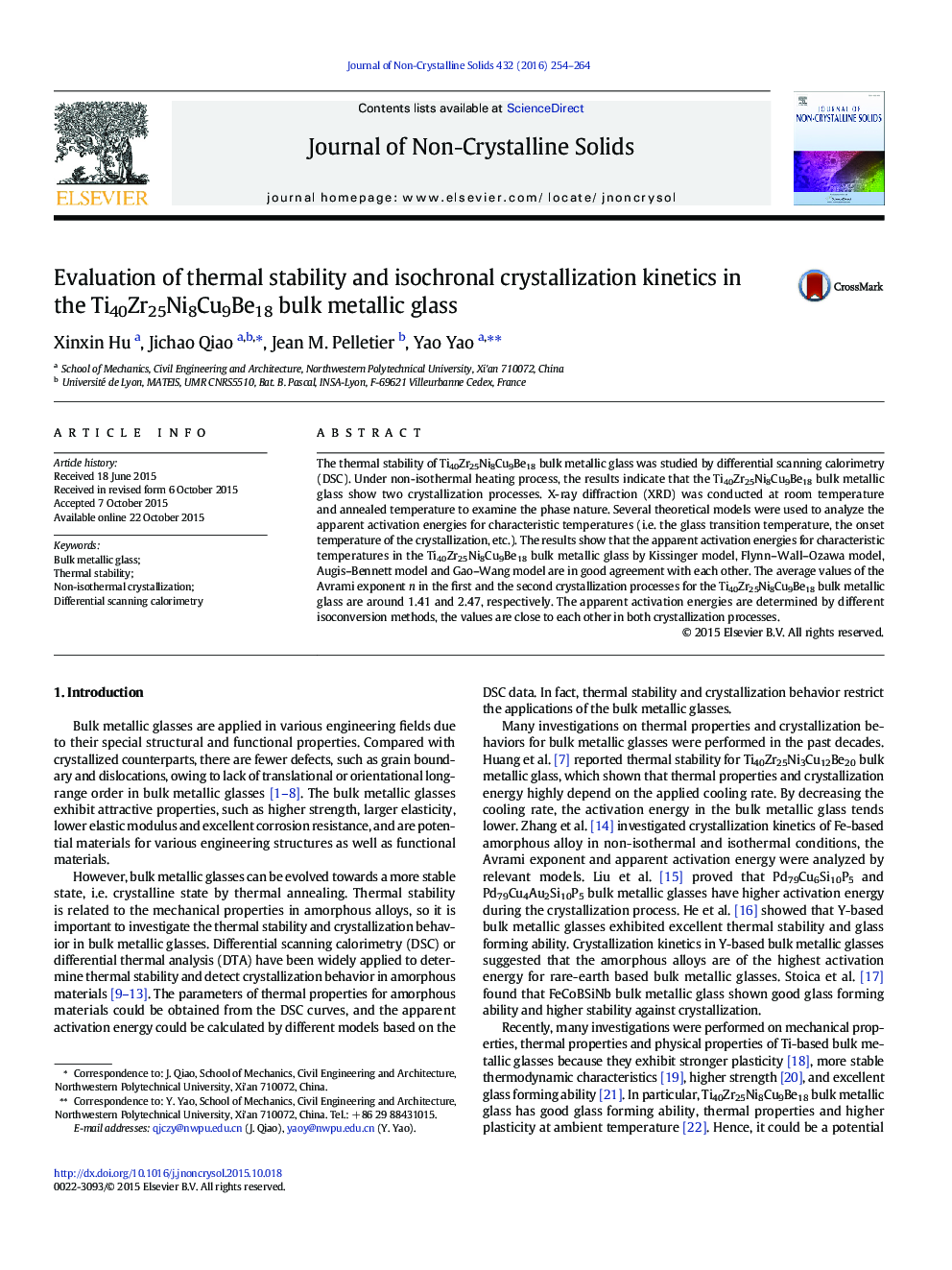| Article ID | Journal | Published Year | Pages | File Type |
|---|---|---|---|---|
| 1480412 | Journal of Non-Crystalline Solids | 2016 | 11 Pages |
•Thermal stability of Ti-based metallic glass was studied by DSC.•Activation energies for characteristic temperatures depend on annealing process.•The Avrami exponent for crystallization processes is around 1.41 and 2.47.
The thermal stability of Ti40Zr25Ni8Cu9Be18 bulk metallic glass was studied by differential scanning calorimetry (DSC). Under non-isothermal heating process, the results indicate that the Ti40Zr25Ni8Cu9Be18 bulk metallic glass show two crystallization processes. X-ray diffraction (XRD) was conducted at room temperature and annealed temperature to examine the phase nature. Several theoretical models were used to analyze the apparent activation energies for characteristic temperatures (i.e. the glass transition temperature, the onset temperature of the crystallization, etc.). The results show that the apparent activation energies for characteristic temperatures in the Ti40Zr25Ni8Cu9Be18 bulk metallic glass by Kissinger model, Flynn–Wall–Ozawa model, Augis–Bennett model and Gao–Wang model are in good agreement with each other. The average values of the Avrami exponent n in the first and the second crystallization processes for the Ti40Zr25Ni8Cu9Be18 bulk metallic glass are around 1.41 and 2.47, respectively. The apparent activation energies are determined by different isoconversion methods, the values are close to each other in both crystallization processes.
